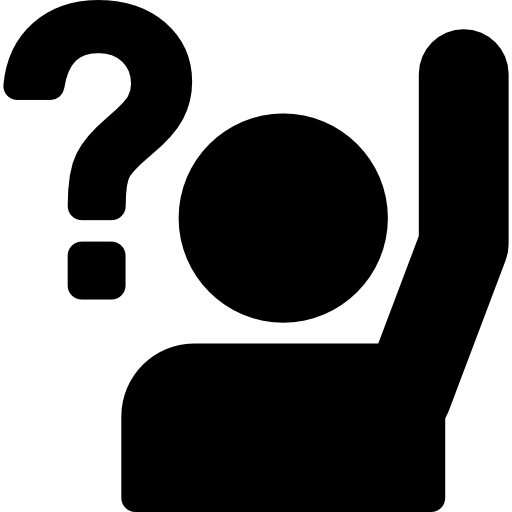now playing:
More
- Slash Chords 2LEVEL 1Continuing to diversify our chord knowledge, we are going to learn another way to use slash chords! Today we'll learn how to take a few basic shapes and move them up and down the neck while also utilizing open strings in our slash chords.
- Jazz ChromaticismLEVEL 6A solo over the chord progression of Gershwin's "I got rhythm" using chromatic lines to get the typical Jazz sound.
- Jazz-Funk ModalLEVEL 4A solo over the chord progression of Herbie Hancock's Cantaloupe Island
- Diatonic Jazz ArpeggiosLEVEL 4Exercise to learn diatonic arpeggios of C major key over the neck. Analysis of chord extension using arpeggios to get a jazzy sound.
- The Blues ScaleLEVEL 1Turn the pentatonic scale into a blues monster!
- The Dorian ScaleLEVEL 1Start diggin' the Dorian scale!
- The Major ScaleLEVEL 1An introduction to music theory and the most fundamental scale.
- The Minor ScaleLEVEL 1More introduction to music theory and the minor scale.
- Symmetrical ScalesLEVEL 5A solo using the D whole-step/half-step diminished, the D half-step/whole-step diminished and the D whole-tone scales.
more
easier
Feedback
 Jerry Arcidiacono6th April 2011
Jerry Arcidiacono6th April 2011Thanks

 Zsolt Galambos6th April 2011
Zsolt Galambos6th April 2011Great lesson on jazz scales

Practicing Peers
- Total views: 0
- Member views: 0
- Guest views: 0
- Lesson
- My notes
Hi GMC'ers! With this lesson I will show how to play different scales over the same chord. You can choose the scale analyzing the chord progression to see if there is a scale which fits well two or more chords. Otherwise, if you have a vamp with a single chord like the backing for this lesson, you can just follow your own personal taste.To fully understand all the concepts, it is important to master the previous lessons of the series, especially Jazz Notes 3: Modes Workout and Jazz Notes 12: Diatonic Improvisation.
I chose to play over a Bb7 chord because dominant 7th chords can support a great variety of extensions. As guitarists, we usually tend to play while jamming over the same scales, tipically E or A minor pentatonics. Playing over a Bb7 chord is usually a good challenge.Let's start with the first scale, Bb Mixolydian, which is the 5th mode of the Eb Major scale. This scale is quite easy to use and improvise with. Just be careful while using the 4th degree - in this case the Eb note - because it sounds a little dissonant. You can play it as a passing note with no problem at all.Let's take a look at the second scale. Bb Lydian b7 is the 4th mode of the F melodic minor scale. It has a raised 4th, in this case a natural E note. This note is the only difference between this scale and the previous one, the mixolydian. If you consider the raised 4th as a tension you get a new chord, usually written Bb7#11 or Bb7#4. Remember that 4th and 11th are the same notes, just in different octaves. So this scale is a great choice over X7#11 chord or you can just play it over dominant 7th chords to get the flavour of the #11.
The Blues scale is quite easy to use to improvise. It's also usually one of the first scales we learn as guitarists. We just need to discuss some facts. The Blues scale has a minor 3rd while the dominant 7th chord has a major 3rd. This is not a big problem because one of the reason about the "bluesy" sound of this scale is the minor 3rd played against a major 3rd on the chord. Then we have a lowered 5th - or a raised 4th - which gives a characteristic sound to the scale. On the following diagram is the one with the green color. This is usually used as a passing note.
The Bb super locrian scale is the 7th mode of the Cb melodic minor scale. Sometimes this scale is also called the "altered" scale because it fits very well the altered dominant 7th chord. This particular chord has all the possible alterations together in the same chord. In particular it's possible to alter the 9th degree, lowering and raising it at the same time. It's possible to raise the 4th (same as 11th) and lower the 6th (same as 13). You can't lower the 4th because you get a major 3rd and you can't raise the 6th because you get a minor 7th.So, the complete chord symbol could be something as Bb7b9#9#11b13... It's not very easy to read and understand!! A common way to write this chord is Bb7alt. This scale is commonly used in Jazz while it's quite difficult to find it in other styles. The dominant 7th chord has a strong sound itself and you can try to use this scale even if it's not an altered chord. Listen carefully how each notes sound against the chord so you can use it in the right way when it's needed!
As exercise, try to extend these scale diagrams to all the fretboard, finding new fingerings and licks!Enjoy! JerryFrom this course:
- Building Jazz ChordsLEVEL 4Basic Jazz concepts. An important feature of Jazz is its more complex chord voicings and we will start by looking at different ways of voicing chords from the major scale.
- Jazz Triads & InversionsLEVEL 3In this second Jazz Notes lesson we will take a look at some basic triads and their inversions. Triads are just about the simplest type of chord you can get.
- Jazz Modes WorkoutLEVEL 3How to play modes, with practical examples. All modes played with Alternate Picking technique.
- Jazz Swing RhythmLEVEL 4Chord progression using jazz chords and a swing rhythm.
- II-V-I Progression: LicksLEVEL 4Simple Jazz licks over the II-V-I progression in different keys.
- Expanding Jazz BluesLEVEL 6A jazzy solo using the "Bird's Blues" chord progression.
- Finding Jazz VoicingsLEVEL 5A quick way to find alternative voicing for chords.
- Extending Jazz ChordsLEVEL 3About jazz chords and extensions.
- Jazz Fingerpicking ILEVEL 5Short musical piece using the finger picking technique with jazzy chords and harmonics.
- Jazz Fingerpicking IILEVEL 5The finger picking technique used with open strings and a common blues progression. As jazz players we should be able to play also some bluesy chords and lines, which can sound cool accompanying the lead player.
- Jazz PentatonicsLEVEL 4How to use the Minor/Major Pentatonic scale to get a jazz sound over a major 7th chord.
- Diatonic ImprovisationLEVEL 5A Jazz solo over the progression of "Lover Man". Theory concepts about modes and chords built over minor scales.
- Diatonic Jazz ArpeggiosLEVEL 4Exercise to learn diatonic arpeggios of C major key over the neck. Analysis of chord extension using arpeggios to get a jazzy sound.
- Jazz ChromaticismLEVEL 6A solo over the chord progression of Gershwin's "I got rhythm" using chromatic lines to get the typical Jazz sound.
- Chord SubstitutionsLEVEL 3Different chord progressions played over the same melody to show how it is possible to change one chord with another. The Tritone substitution technique.
- Symmetrical ScalesLEVEL 5A solo using the D whole-step/half-step diminished, the D half-step/whole-step diminished and the D whole-tone scales.
- Latin CompingLEVEL 4A Latin Jazz short tune which uses extended and altered chords.
- BebopLEVEL 7A Bebop solo over the chord progression of Charlie Parker's Ornithology
- Jazz-Funk ModalLEVEL 4A solo over the chord progression of Herbie Hancock's Cantaloupe Island
- Minor BluesLEVEL 4Jazz solo over a Minor Blues chord progression.
- Playing OutsideLEVEL 6A solo over the chord progression of It Don't Mean A Thing by Duke Ellington, using different techniques to play outside the changes (but not randomly).
Scrubbing / forward / rewind: arrow right, arrow left keys
Jump to start: Home or `s` , you can also click/tap the lesson part again (the numbers above player)
Go to next part: PageUP or End.
Volume: ArrowUp / ArrowDown keys
Go to any part: Number keys (combinations also possible)
Pause or play: `k` or space key
Fullscreen: `f`, esc to close
Increase / decrease speed : `+` or `-`
Jump to start: Home or `s` , you can also click/tap the lesson part again (the numbers above player)
Go to next part: PageUP or End.
Volume: ArrowUp / ArrowDown keys
Go to any part: Number keys (combinations also possible)
Pause or play: `k` or space key
Fullscreen: `f`, esc to close
Increase / decrease speed : `+` or `-`







